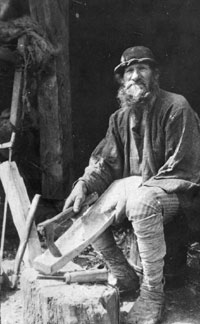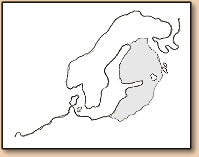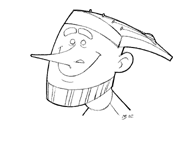History
No musical instrument feeds the family, nor the wife.
 Kannel is Estonian version of an instrument known throughout the world as either zither or lap harp. But to refer to the Estonian origin it is recommended by the instrument masters to use the same name as in Estonian - kannel.
The oldest string instrument in Estonia is a 6-7 string (earlier 5-string) kannel. It's history dates back over 2000 years. Kannel was formed in ancient times among Fenno-Baltic and Baltic tribes and was taken over by neighbouring Balto-Slavic tribes. Finns have kantele, Latvians - kokle, Lithuanians - kanklis, Slavs - gusli.
Kannel is Estonian version of an instrument known throughout the world as either zither or lap harp. But to refer to the Estonian origin it is recommended by the instrument masters to use the same name as in Estonian - kannel.
The oldest string instrument in Estonia is a 6-7 string (earlier 5-string) kannel. It's history dates back over 2000 years. Kannel was formed in ancient times among Fenno-Baltic and Baltic tribes and was taken over by neighbouring Balto-Slavic tribes. Finns have kantele, Latvians - kokle, Lithuanians - kanklis, Slavs - gusli.
Magic meanings were often attributed to the kannel. In the Bible's Estonian translation David has been given a kannel and therefore it is thought that God has found favour in kannel playing. Therefore kannel has never been among the instrument that church would ever prohibit. The Estonian kannel was first mentioned in 1579.
Although the sound creating system is the same everywhere, there are rather big differences in the construction of the kannel. In some areas there have been found instruments where the sound box has been undercut from the top, bottom or even from the side. Different kind of wood has been used for making kannels. In Estonia as a rule fir, pine, lime, alder and birch were used. Some kannels were made of logs from old wooden log houses, because this material was well dried up and had no inner tensions. Copper wire was mostly preferred for making strings, but also horsehair or lambgut.
For tuning the instrument wooden turning (winding) -pins (virbel - Est.) were originally used. Later they were substituted by metal pins.
A different form of kannel - gusli, is spread among North-West Russians, Setos and Vepsians. The shape of this kannel had a different extention so-called tail - sound tail (Seto's helühand Est.). The extention's task was to enlarge the sound-creating area, which also improved the quality of sound.
|
|
|
The syle of playing kannel greatly differed among Setos. They put the kannel sideways on their knees and the left hand fingers were between the strings (between every other string). When moving one's hand in this manner it was possible to create different chords. The other uncovered strings were made to sound with the right hand fingers. The same kind of covered technique was used by Votians and North-West Russian gusli-players. In other areas so called "picking"-technique was mostly used which allowed a more melodic tune to be made. In general the covered technique is considered to be archaic and the "picking"-technique more up to date. The golden time of kannel-playing was at the last quarter of the 19th century and the beginning of the 20th century, when playing the kannel gained great popularity. "Almost every Estonian makes oneself a kannel and can play with it. The musical talent and way of thinking was decided by the owner's kannel. " (A. Kirkmann, 1941) The widespread Estonian 6-7 string kannel went through the general development of folk music and the number of strings started to grow little by little. Sometimes there were up to 12 strings. Every now and then some extra strings, so-called bourdon strings, were added to the existing strings. They helped to widen the melodic scheme and enriched the dynamics of playing style. The growth of number of strings was caused by the enlargement of folk tunes' extention. In addition newer kannel-like instruments started to appear, at the latest in the 17th century. Foreign psalteries and zithers were used as models. In Estonia a new zither-type kannel, so called simmel or simbel was formed. The simbel's construction, playing syle and repertory was completely new. At the beginning of the 20th century the 6,7 or 9- stringed little kannel was played only in Setomaa, where soon the more modern zither-type kannel displaced the little kannel. This kind of zither-type diatonic kannel is played until today in Estonia. In the middle of the 20th century a chromatic kannel was developed from it. |
|
Bowed harp (hiiurootsi kannel Est.) is a bow-instrument, that came to Estonia from Sweden. With the help of Estonian Swedes the instrument reached to the Estonian music players. In Sweden the instrument was called strakharpa (talharpa i.e. "horsehair harp"). In Finland the corresponding word was jouhikko or jouhlikantele. In Estonia it is called bow-played kannel. It caused misunderstanding to call the two different instruments kannel, therefore the word Hiiu was added to the name and it also referred to the territory where it was used. So it is now called Hiiu kannel. Nowadays it is called hiiurootsi kannel (hiiuswedish kannel) because it gives the clearer picture of the instrument type, spreading territory and origin. Horse hair and guts are used for making strings and bows. Usually the body of the instrument is triangular, sometimes violin-like. There were about 3-4 strings, but 2-stringed instruments were also known in East-Finland and Karelia. In the 19th century kannel music became ostracised among too pious church circles becasuse of merry traditional dance tunes. From then on the tradition of playing started to fade. At the beginning of the 20th century this instrument was rarely played by any Estonian musicians. Nowadays the interest in the instrument has grown to the extent that it is being taught and played again.
Used materials
Books:
- Tampere, H. 1975. Eesti rahvapillid ja rahvatantsud. Tallinn: Eesti Raamat
- Tõnurist, I. 1996. Pillid ja pillimäng eesti külaelus. Tallinn: Teaduste Akadeemia Kirjastus.
- Karras, P.,Tõnurist, I. 2001. Kuuekeelne kannel. Noodikogu. Viljandi: OÜ VALI press
- Karras, P. 1996. Kuuekeelse kandle noodikogu. Viljandi
- Viires, A., Vunder, E. 1998. Eesti Rahvakultuur. Tallinn: AS Pakett



